Best baby monitors – the top baby cams and smart gadgets to ensure your tot is safe
A good baby monitor will ensure your peace of mind while your little one sleeps. These are the best models on the market.
There are many different types of baby monitors out there and deciphering which one would suit you and your baby’s needs can seem tricky. Do you want a simple audio device or to be able to see your child, too? Is a motion sensor (a pad placed under the mattress to detect movement) important to you in the early and often nerve-racking days of parenthood?
There are lots of frilly baby monitor features to choose from. Lullabies, a temperature monitor, lights, white-noise and a two-way communication may help to sooth your child when you're in another room. But how necessary are these added extras? Ultimately, the job of a baby monitor is to reassure you that your sleeping baby is safe and comfortable. You really just want a monitor that covers the basics, is reliable and won’t let you down.
A clear sound is imperative with a baby monitor but there are other factors to consider. Does it have a good range? What is the battery life like and signal strength? It is also important to think about how you will be using it. How far away will you be from your baby whilst they sleep? Do you want one you can take from room to room easily, or even outside into the garden? Will you be travelling abroad with it?
What are the different kinds of baby monitors?
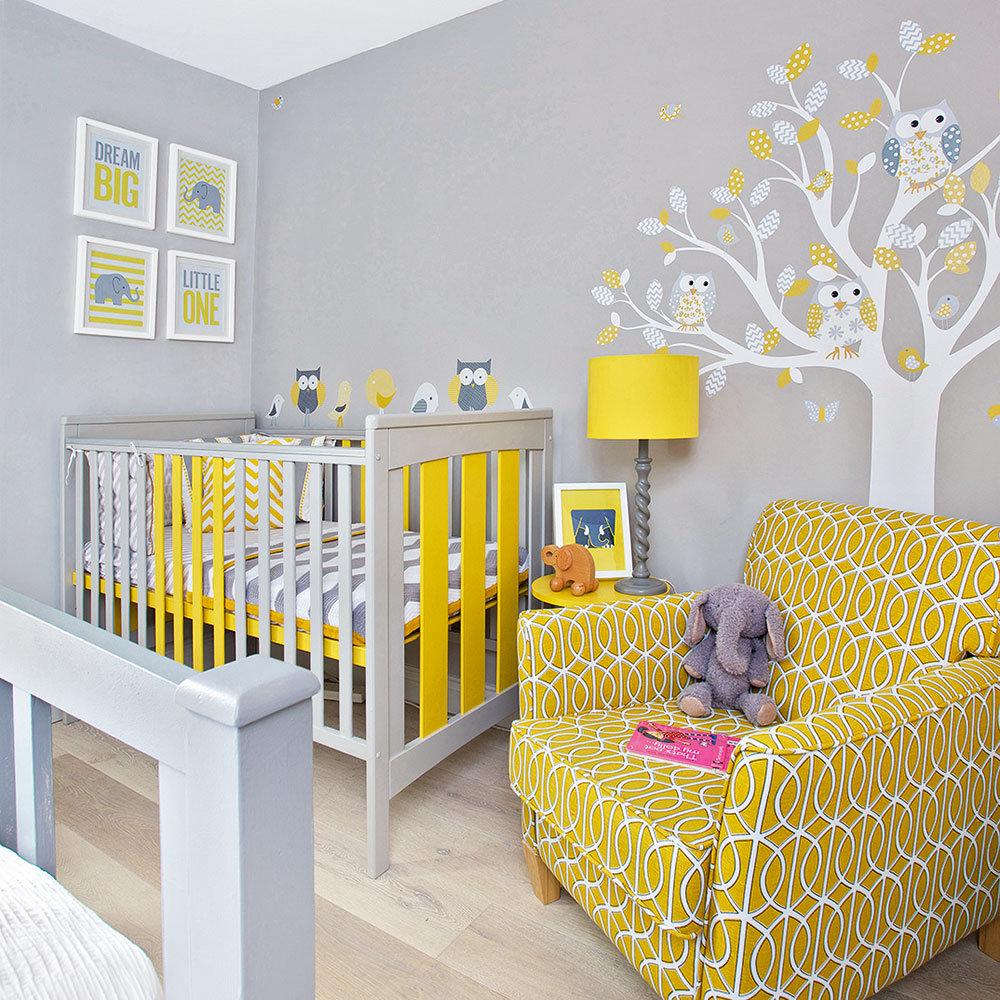
Baby monitors all consist of two units. One device is set up in the baby’s room and one wherever the parent is. There are three main types and which one you choose will depend on your budget and how much peace of mind you need.
1. Audio baby monitors
An audio-only baby monitor is the simplest option. It is made up of the baby unit (also known as the base or transmitter) and the parent unit or receiver. The baby unit stays in the nursery close to the child. The parent unit can either be kept on you (if it’s portable) as you move around, or set up in the room you spend most time in.
The baby unit, equipped with a microphone, uses a wireless signal to transmit sound back to the parent unit so you can easily hear every sound. If you have hearing difficulties, most baby monitors have a visible signal as well as repeating the sound. This is often in the form of a set of lights to indicate the noise level and some have a vibrating alert.
2. Video baby monitors
A video monitor or baby cam is also made up of a transmitter and receiver unit. The transmitter or camera unit is placed in the baby’s room and is best positioned on a tall piece of furniture across the room from the crib. It can also be mounted on a wall with a clear view of the baby. Always make sure the cords are tacked securely to the wall and well out of your baby’s reach.
Most video monitors today have a decent infrared night vision allowing you to easily see your baby in a dark room. They will switch to this mode automatically in the dark. Also, some video monitors now work over Wi-Fi so parents can keep an eye on their little one through their smartphone or computer. The video quality tends to be pretty basic but should still do the job. Handy extras are baby monitors with a digital zoom or a camera than can pan around the room. For some parents, only hearing your baby isn’t quite enough. If that’s you then a video monitor may be for you.
3. Audio/video with motion sensor pads
Some audio and video monitors come with an A4-size sensor pad which you place under the mattress of the cot or crib. If the baby doesn’t move for a period of time or if the pad can’t detect breathing an alarm sounds on the receiver. Some parents will find motion sensors reassuring. This is especially so in the first weeks of parenting, when there's a greater risk of sudden infant death syndrome (SIDS). If this helps to reduce your stress levels then it’s definitely worth the investment.
How much do I need to spend on a baby monitor?
No matter what your budget, there should be a baby monitor available that you can rely on. Prices of baby monitors can range from £20 up to over £200, it just depends how many added features you want. The budget models cover the basics but very little else, or you can buy a very decent mid-range monitor for around £50-£70. The top-of-the-range models with more complex extra features start from £100 upwards.
Some parents feel they give you more genuine peace of mind and help you to keep a closer eye (and ear) on your little one. However there is also the argument that the more you can observe, the less you can actually switch off and relax. Ultimately it all comes down to personal choice and lifestyle.
Best baby monitors

1. Philips Avent DECT Baby Monitor SCD506
With this Philips baby monitor you simply plug in and play – no charging time necessary. The baby unit base is a neat, chunky device that needs to be connected to a mains socket at all times. In case of a power failure it will run on 4 non-rechargeable batteries. Once the parent unit is charged up, enjoy the freedom of cordless streaming. The rechargeable batteries should last for up to 24 hours and this will allow you to easily move from room to room.
You can even wear it around your neck with the neck strap provided; it’s lightweight and compact – like a small mobile phone. A notable feature is the crystal clear sound quality, thanks to the DECT technology. You will be able to hear every cough, hiccup or whimper. There is also a two-way talk function so you can comfort your baby from any room in the house. You simply press the TALK button and speak into the microphone.
The baby unit is well designed and features pre-set lullabies and a soft nightlight, which is useful for checking on your baby with minimal disturbance. Handily, once the battery is low on the parent unit or you step out of range it will alert you. One tiny snag with this is that the beep is rather loud. It has an indoor range of 50 metres but an impressive 330 metre range outside. This is really useful for when your baby naps in the day time and you want to spend time in the garden. For first-time parents who are happy to invest a bit more for a monitor with superior sound quality, flexibility and extra functions, this is a suitable baby monitor.
Ideal Home’s rating: 5 out of 5
Buy now: Philips Avent DECT Baby Monitor, SCD506, £68, Amazon
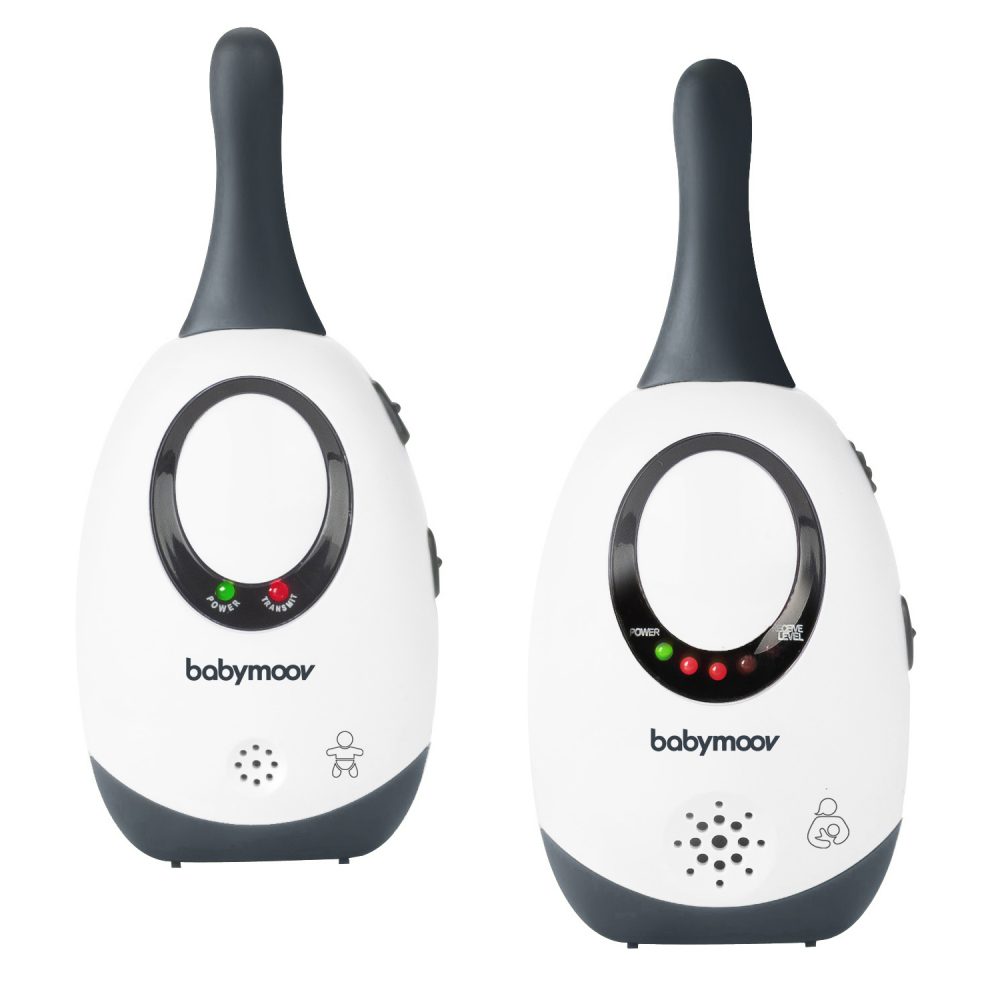
2. Babymoov Simply Care monitor
This smart, simple design is very easy to use. The two units look almost identical but come with a handy parent or baby picture so you know which one is which. To set up, you simply plug the units into the mains with the adaptors included. This baby monitor also operates on 4 AAA batteries so is ideal for travelling or even camping. It promises you will hear your baby clearly within a whopping 300 metre range.
The monitor is analogue and doesn’t come with very many features. What sets it apart from the rest is its ‘Digital Green’ technology - none of Babymoov’s monitors exceed a transmission power of 10 megawatts. This means the monitor produces no electromagnetic waves (although there is little evidence of these harming a baby).
To save power, the monitor has a voice activation feature which means it only kicks in once your baby makes a noise. The sound quality is slightly muffled at a high volume though so you might want to play around with the levels. If you need to get things done around the house whilst your baby sleeps then a handy design feature is the clip on the back of the parent unit which you can attach to your clothing. For saving money and using a device that’s simple, portable yet reliable and neatly designed, this is a strong contender.
Ideal Home’s rating: 4 out of 5
Buy now: Babymoov, Simply Care monitor, £41, Amazon
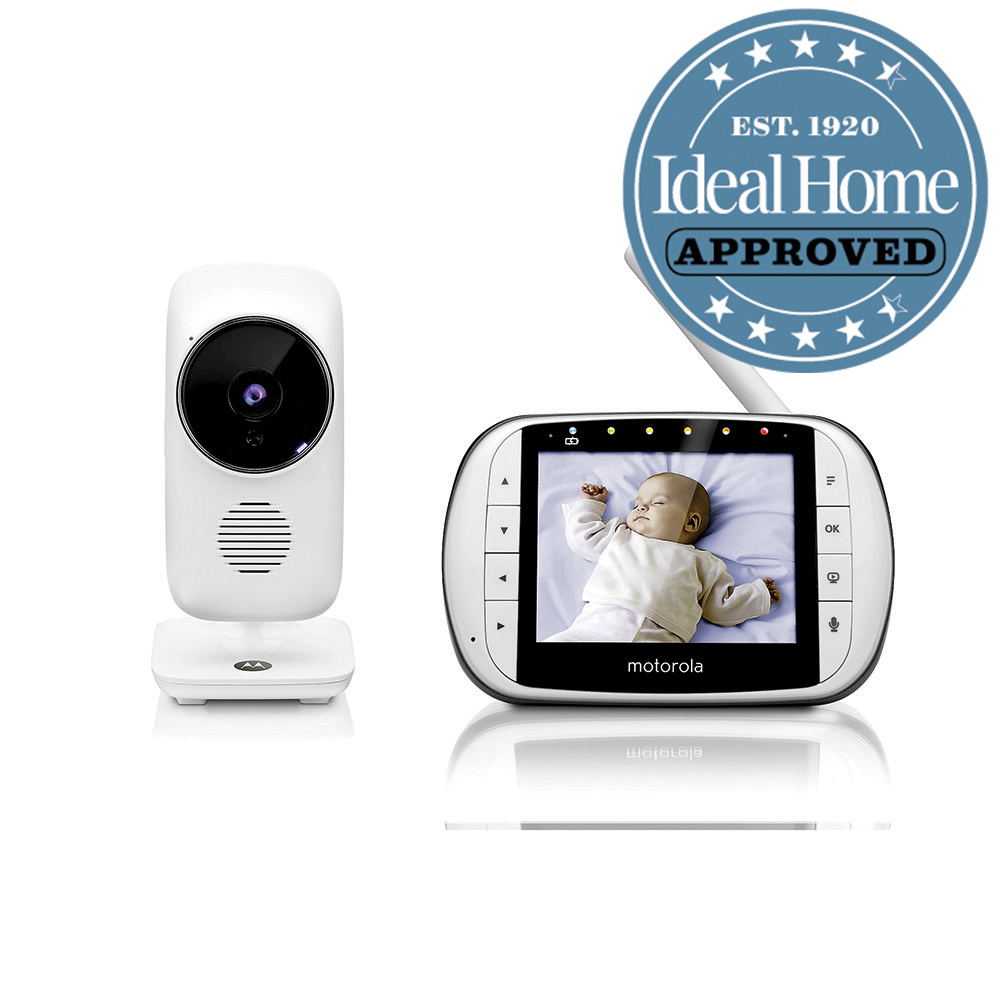
3. Motorola MBP331 digital video baby monitor
This 2.8” colour screen digital video baby monitor is easy to set up and packed full of features. The picture is a really good quality and the screen is a nice neat size and comes with a handy stand so it can be easily propped up. The baby unit is a doddle to set up. The camera can either be placed on top of a tall piece of furniture angled towards your baby. It also comes with a handy rubber gripper that you can attach to pretty much anything to get the best angle.
It works well on the side of the cot but I also tried it on a shelf and wardrobe door and once in place, it felt secure and didn’t feel like it was going to slip off. Note, the camera does need to be fitted to a power socket but it comes with a long cable.
Other useful features include a two-way communication, infrared night vision so you can clearly see your baby in the dark, a room temperature monitor and pre-set lullabies. The sound quality is top notch but when the volume is on it’s lowest setting it is still quite loud - a slight drawback.
Ideal Home’s Rating: 4.5 out of 5
Buy now: Motorola MBP331 digital video baby monitor, £49.99, ebay

4. BT audio baby monitor 400
Compact and easy to set up within only a few minutes this analogue monitor does the job. If you’re looking for a budget buy without the need for any frilly extras, then this will suit you well. The baby unit needs to be plugged into the mains at all times but the parent unit comes with rechargeable batteries. It will need to be plugged into the mains initially but after 16 hours will be fully charged. The baby monitor will be portable until the batteries run low, when you will receive a warning light.
Like other analogue monitors you will get some hissing and if you live in a built up area it will pick up ambient noise. However, if you’re happy to keep the volume low, this shouldn’t bother you too much. The upside to analogue monitors is there is no risk from pulsed signals as emitted by digital devices. While some consider these harmful to babies, there's little evidence to support this.
The parent unit is fuss-free, featuring only the basics. These include a battery light, volume control, a mute button and link light which flashes and beeps when the monitor is trying to find a link. The light remains solid when the parent and baby unit are connected. The claimed range is 300 metres but when I tested this out it lost the link after only 100 metres. If you live in a small flat this won’t be an issue.
Ideal Home’s rating: 3 out of 5
Buy now: BT audio baby monitor 400, £24, Amazon
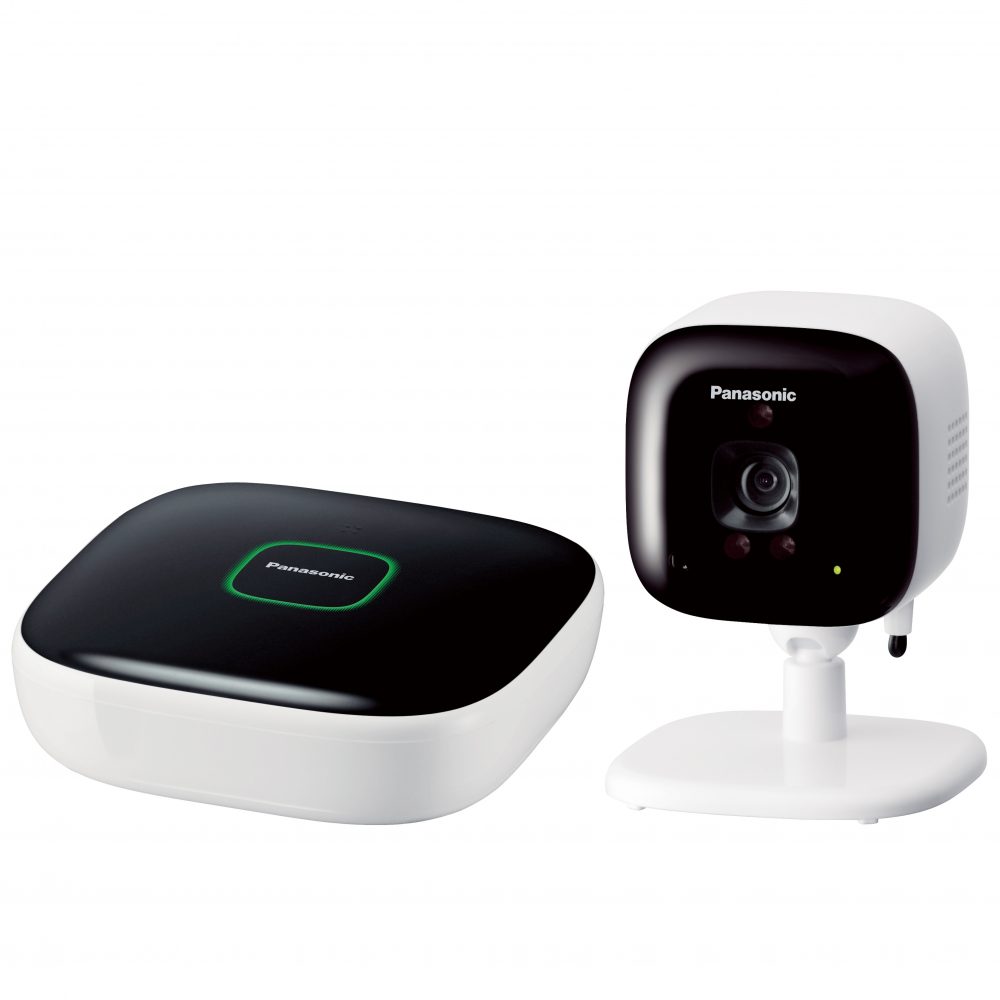
5. Panasonic Smart Home Baby Monitor Safety Kit
Stay close to your little one at all times with live, full-colour footage streamed straight to your smartphone or tablet, even when you’re out of the house. The kit includes an indoor camera (with a built-in microphone) and a DECT-enabled smart hub which connects to your home WiFi. The monitor also connects wirelessly to your smart devices. You can connect up to 8 different users which is really handy for other family members or baby sitters.
The camera needs to be plugged into a power outlet and can either mount to the wall or sit on a flat surface. The hub needs to be positioned in a convenient location where it can connect wirelessly to the camera and your home WiFi. Download the free app (Home Network System) and you can access the system from your mobile or tablet and get set up.
The app guides you through the set up process in just a few clicks and then you’re ready to roll. Handy features include a two-way communication, a 300 metre range and a touch-screen zoom. This baby monitor also sends alerts to your smart device when a problem is detected, such as a sound, movement or room temperature change. You can even record or take videos, should anything cute happen. If you’re happy to invest, this system has a lot of potential. With another baby (or twins), you can buy an additional camera and connect it to your existing network. It could even double as a home security system!
Ideal Home’s rating: 3.5 out of 5
Buy now: Panasonic Smart Home Baby Monitor Safety Kit, £125, Amazon
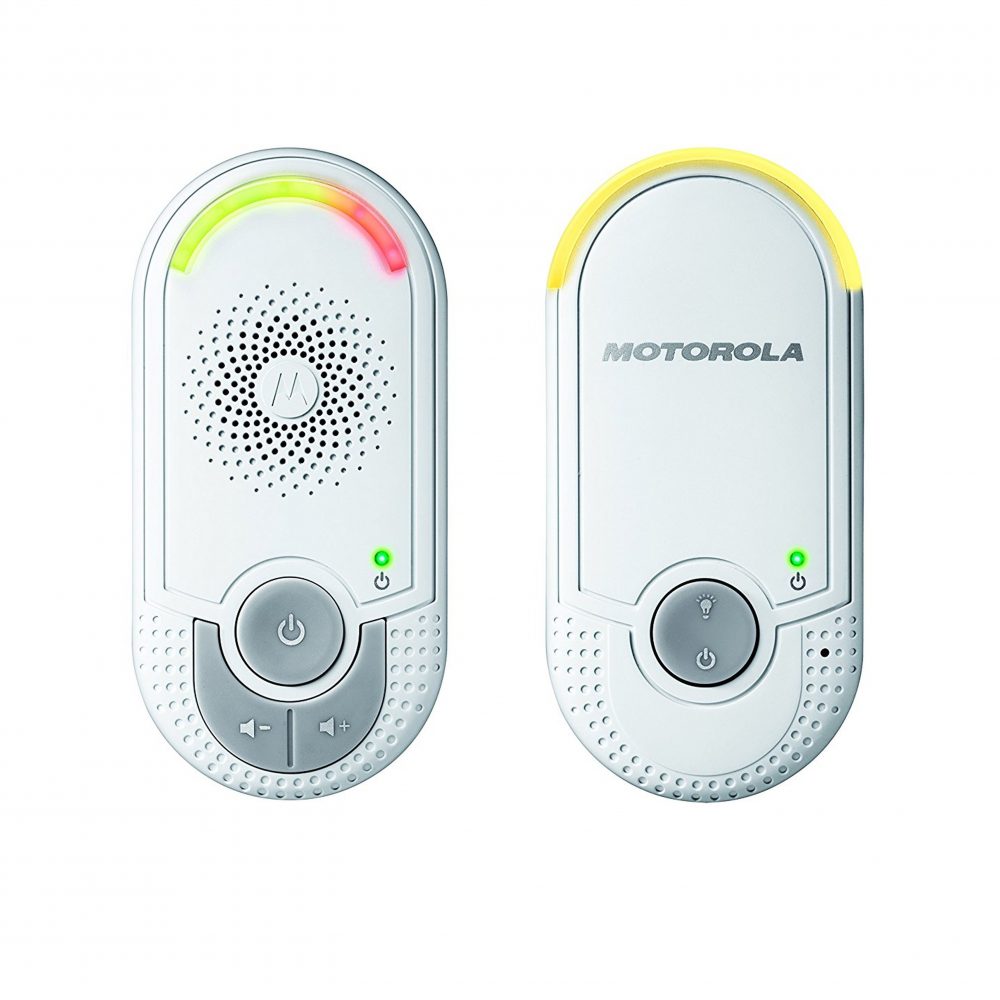
6. Motorola MBP8 Audio Baby Monitor
If you are looking for a basic baby monitor without the need for any special features, then this ticks that box. It’s a doddle to set up as both the baby and parent units simply plug into a mains socket - then it's good to go. There is no need to wait hours for it to charge up and it’s cordless so there's no need to faff around with cables.
It is equipped with DECT technology for sound clarity. When your little one makes a noise there are two forms of notification on the parent unit: the audio coming through the speaker (with a volume control) and 5 sound-activated LEDs. This is handy if you need to turn the volume down for a phone call or dinner party. Data encryption is also built in for added security.
This baby monitor has a range of up to 50 metres and the receiver will alert you with an out-of-range warning sound if you venture too far. The parent unit can be moved from room to room. The only snag is that it does have to be plugged into a wall socket to work – this applies to the baby unit, too. All in all this is a neat and reliable, no-frills baby monitor with excellent sound quality – a good product for the price. It’s also easy to pack and take away with you on holiday.
Ideal Home’s rating: 4 out of 5
Buy now: Motorola MBP8 Audio Baby Monitor, £24.99, Amazon
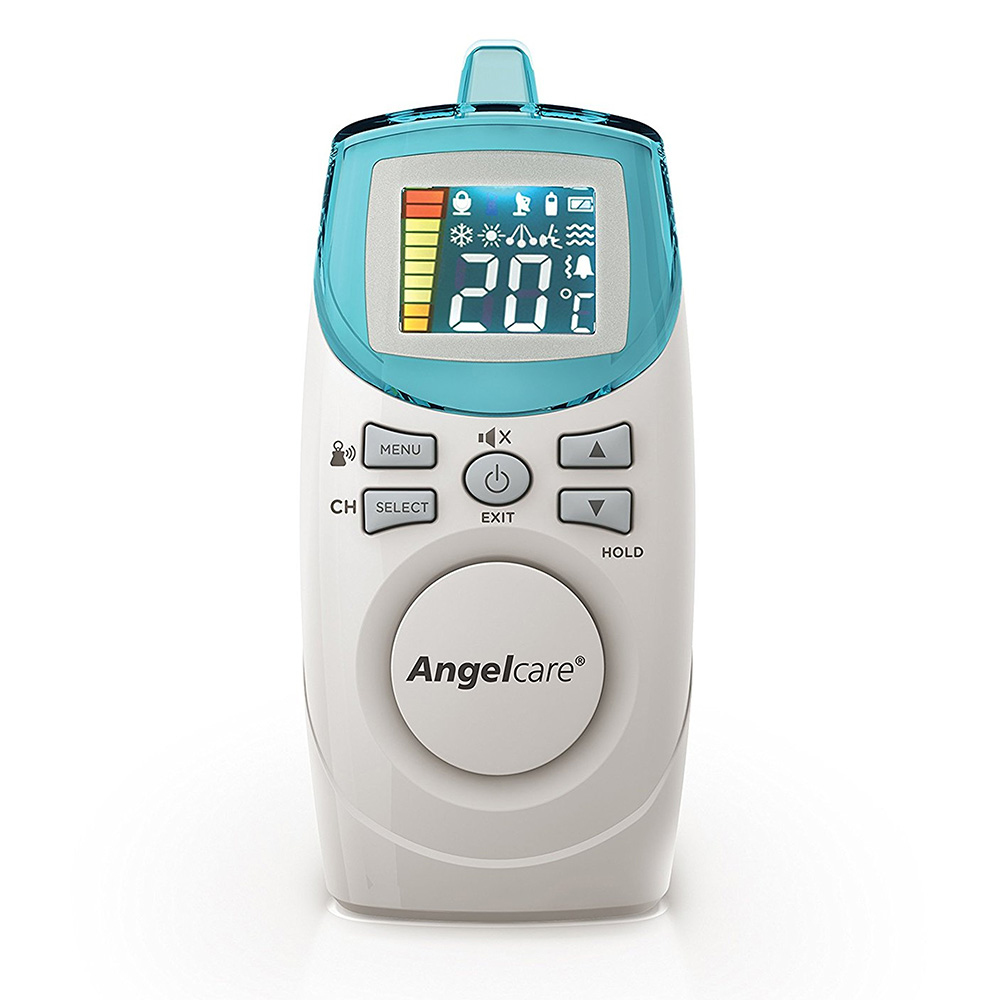
7. Angelcare AC401 Movement and Sound Baby Monitor
This analogue baby monitor offers plenty of reassuring and flexible features, monitoring sound, movement and the temperature of the room. The iconic angel-shaped baby unit with it’s halo (that doubles as a nightlight) and wings (the on/off switch) plugs into the mains. However, it also takes rechargeable batteries which it will automatically revert to in case of a power failure.
The baby monitor unit connects to the motion sensor pad that fits under the mattress of your crib or cot. It must be placed on a hard surface in order to work properly, so this isn’t an option for Moses baskets. The sensor works by detecting movement and if there hasn’t been any for 20 seconds it will trigger an alarm or vibration on the parent unit. This is a very useful feature when you first move your baby into their own room. You can also adjust the sensitivity of the pad as your baby grows and becomes more active.
You can manage and control everything from the monitor parent unit which is rechargeable, portable and lightweight. The small LCD screen and four buttons to switch between functions will guide you through. You can set your own parameters for the room temperature, select movement only, sound only or both. You can also opt for continuous transmission or sound activated. If you’re looking for a simple ‘plug-in and play’ this might not suit you. It’s a very smart device but isn't the most user-friendly. Techno-phobes might need a helping hand to get it set up as it's quite fiddly. However, once it’s up and running and you have got to grips with how it works it offers a good performance.
Ideal Home’s rating: 4 out of 5
Buy now: Angelcare AC401 Movement and Sound Baby Monitor, £118.99, Amazon
What should you look for when buying a baby monitor?
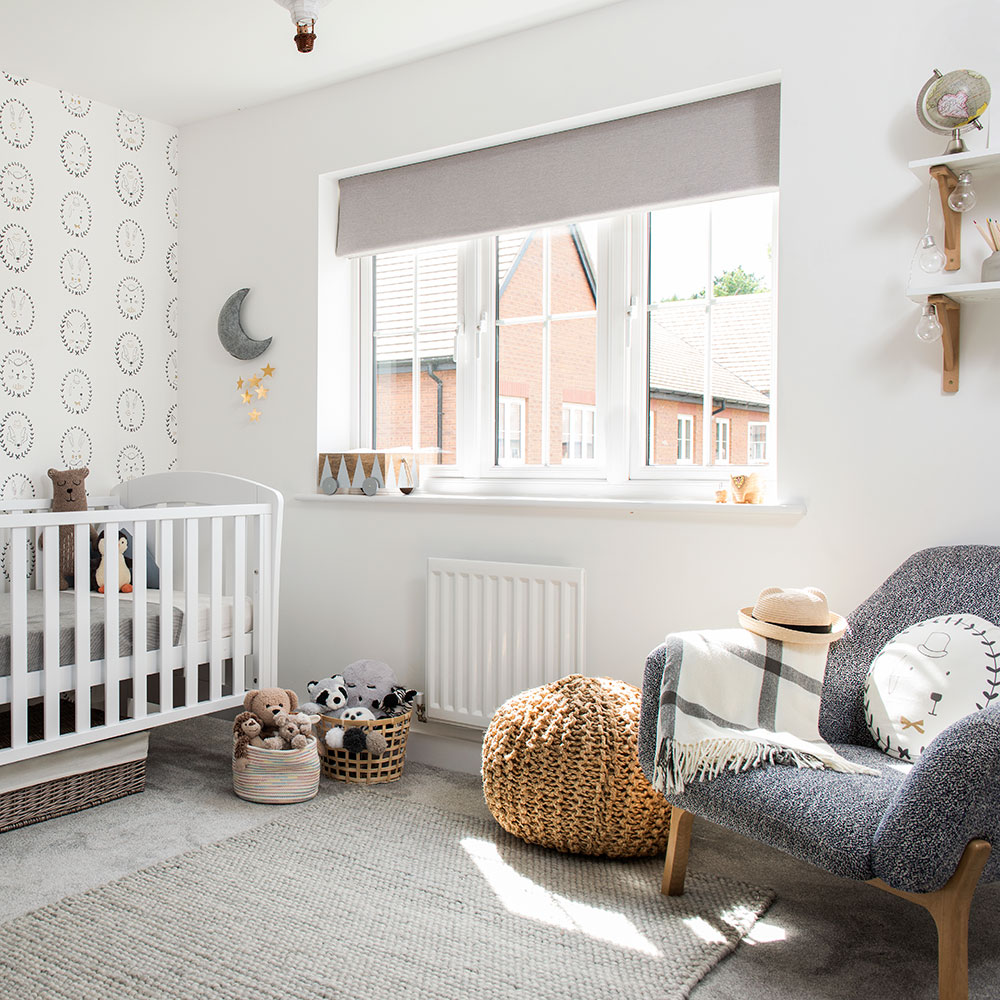
So what about baby monitor technology? What are the options? Which one you choose will depend on your budget, where you live and the size of your home. You may be influenced by the sort of other electronics you already own. Again, there are three main types:
1. Analogue monitors
Analogue monitors have been around for the longest and are therefore readily available and more affordable. Some argue analogue is better for your baby as the signal it emits isn’t as strong as a digital monitor. However, there are a few disadvantages:
- They are prone to interference from other devices.
- They can pick up signals from other baby monitors if you live in a densely populated area.
- The sound quality can be poor – you may hear a hissing, rather like a cheap radio.
- Other cordless devices may interfere with the signal, e.g. cordless phones, radios, or even microwaves.
2. Digital monitors
Digital monitors have a much more reliable sound quality as they use a frequency which makes any interference unlikely. The signal is also more secure as it’s encrypted. This means no one else can hear what is happening in your household if those signals cross paths.
The disadvantages are:
- They may possibly interfere with a wireless router
- Some worry about health risks as a digital monitor emits stronger pulsing signals. However, there is a lack of evidence of any harm. For peace of mind, always make sure your monitor is placed well away from the baby.
3. DECT digital baby monitors
DECT or Digital Enhanced Cordless Telecommunications is a worldwide standard for cordless devices. These monitors are practically interference-free as they use a special frequency of 1.9 GHz which ensures this. They can also have a range of up to 300m. They are likely to be a bit more expensive but the sound quality is far superior. This is thanks with high-sensitivity microphones that filter out any ambient noise but will pick up your baby’s breathing.
Sign up to our newsletter for style inspiration, real homes, project and garden advice and shopping know-how